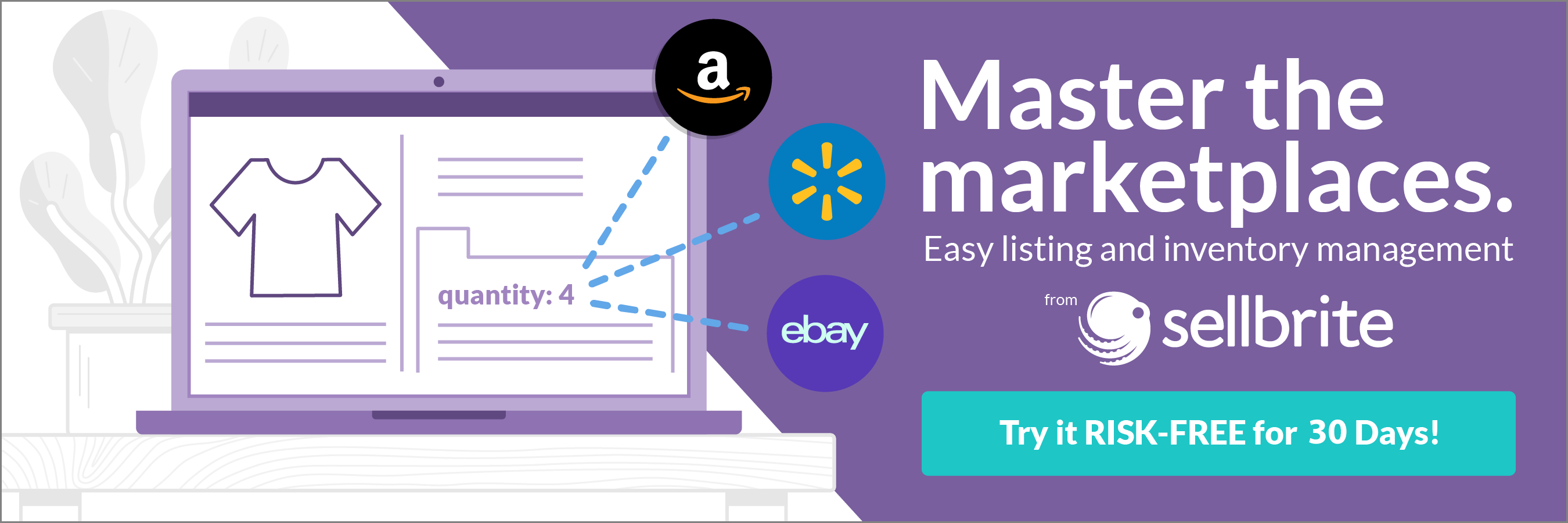FBA is restricting non-essential product inbounds and Prime deliveries, meaning you need an FBA alternative for your Amazon items if you want to continue selling through the coronavirus pandemic.
We’re here to explain FBM and how viable it is as an alternative for FBA. We’ll go over what has happened with FBA, common FBM questions, and how to get started.
What’s happened with FBA?
Following the outbreak of COVID-19 and the mass panic buying that followed, Amazon has imposed two restrictions on its FBA service:
- Amazon warehouses are only accepting inbound deliveries of essential items.
- Amazon Prime is no longer guaranteeing non-essential item deliveries within two, one, or the next day.
If you don’t sell essential items, such as groceries or baby products, those changes are a problem. You can’t replenish stock held in FBA warehouses, you can’t add new product lines, and you can’t guarantee customers fast delivery.
You need an alternative to FBA.
FBA alternative #1: riding out the storm
The first alternative option to using FBA at the moment is doing nothing and waiting for the service to return to normal.
While Amazon is working hard to resume normal service, they don’t know how long this could be. In the meantime, you’re frustrating customers, losing sales, and benefiting any competition who’s found a better alternative.
You’re also missing out on a huge opportunity to benefit from the growth in online traffic, support your customers through a difficult time, and expand into different product lines or markets that can support your business through the pandemic.
Luckily, there’s another option.
FBA alternative #2: FBM
Fulfillment By Merchant (FBM) is the alternative to Amazon FBA, where you become responsible for storing, picking, packing, and shipping items.
Since FBM doesn’t rely on Amazon’s fulfillment network, you can maintain Prime-like services, allowing you to:
- Continue serving shoppers and maintaining sales
- Benefit from increased buyer demand during the crisis
- Unify your fulfillment across your sales channels
How does FBM work?
There are two methods for fulfilling Amazon orders by merchant:
1. In-house fulfillment
In-house Amazon fulfillment involves using your own storage facilities, packaging, staff, and shipping carrier to take orders from receipt to delivery.
Switching to in-house FBM allows you to regain control of your order fulfillment and maintain your Prime delivery speeds.
However, you must be realistic with your ability to do this in the current climate. You’ll need space, experience, a fast shipping carrier, staff, and motivation. If any of these are lacking, or unavailable, outsourced fulfillment may be more suitable.
2. Outsourced fulfillment
Outsourced FBM involves using an outsourced fulfillment provider to replicate the service you received from Amazon FBA.
You ship your items to multiple warehouses across the country, and your fulfillment partner picks, pack, and ships orders to your customers.
Switching to outsourced FBM allows you to maintain your 2-day Prime delivery speeds, without having to worry about how you’ll do it yourself. However, it’s important that you look for a fulfillment partner that’s operating at full service, and can maintain fast delivery speeds.
How much does FBM cost?
While Amazon doesn’t charge a fee for FBM (other than your usual seller fees), you will have different costs to consider. These include:
- The costs of an outsourced fulfillment partner; or
- The costs of in-house fulfillment storage, staff, packaging, and shipping.
Tip: Compare the costs of different fulfillment options using our fulfillment cost calculator.
Will I lose my Amazon Prime badge?
Sellers can retain their Amazon Prime badge if they’re approved for Seller Fulfilled Prime. This requires meeting and maintaining the following criteria:
- Have fulfilled over 20 Premium Shipping orders over the past 30 days;
- Have an on-time delivery rate of >96% (99% during the trial);
- Maintain a cancellation rate of <1%;
- Add tracking ID to >84% of orders;
- Maintain a 4.5+ feedback rating over a 30-day rolling period.
If you can’t meet these requirements in-house, pick an outsourced fulfillment provider who can.
Successful sellers using FBM
Fulfillment by Merchant is a practice used by many successful online sellers already. Retailers including Kate Spade, Crocs, and Leesa fulfill Amazon orders themselves or via a third-party fulfillment provider.
You can see this from the absent “shipped by Amazon” wording above the add to cart button. This is because FBM comes with significant benefits, even when FBA is operating normally.
Control
The ability to control where your inventory is sold, the handling of your items, the shipping speeds you offer, the use of non-Amazon branded boxes, and the shipping carriers you use.
Cost savings
The opportunity to avoid Amazon’s high costs for slow-moving stock, large and heavy items, and multi-channel fulfillment.
Visibility
The ability to retain Prime-status visibility on Amazon and qualify for fast shipping programs on your other sales channels.
Efficiency
Unifying fulfillment for your online marketplaces and eCommerce website can save costs, increase efficiencies, and maximize stock availability.
How to get started with FBM
If you’re a Sellbrite customer, you can use the Deliverr integration to access FBM. This includes quick on-boarding, nationwide 2-day delivery, and reliable fulfillment. You can find full details on how to do so here.
Alternatively, if you want to fulfill FBM orders in-house, you need to arrange the following:
- Appropriate storage for your products;
- Staff to pick and pack items;
- Packaging to send your items in; and
- Shipping carriers who are still delivering within 2-days.
Once you have the necessary processes in place, you can amend your fulfillment settings in Seller Central.
Final thoughts
Fulfillment By Merchant is a strong alternative to FBA and, if you’re using an outsourced fulfillment provider, the process can be just as easy. For Amazon sellers that want to continue making money throughout the coronavirus pandemic, this isn’t a question of whether or not to use FBM, but more a question of how you implement FBM.
Once the pandemic is over, you can revert back to using FBA or continue using FBM to fulfill your Amazon orders.


